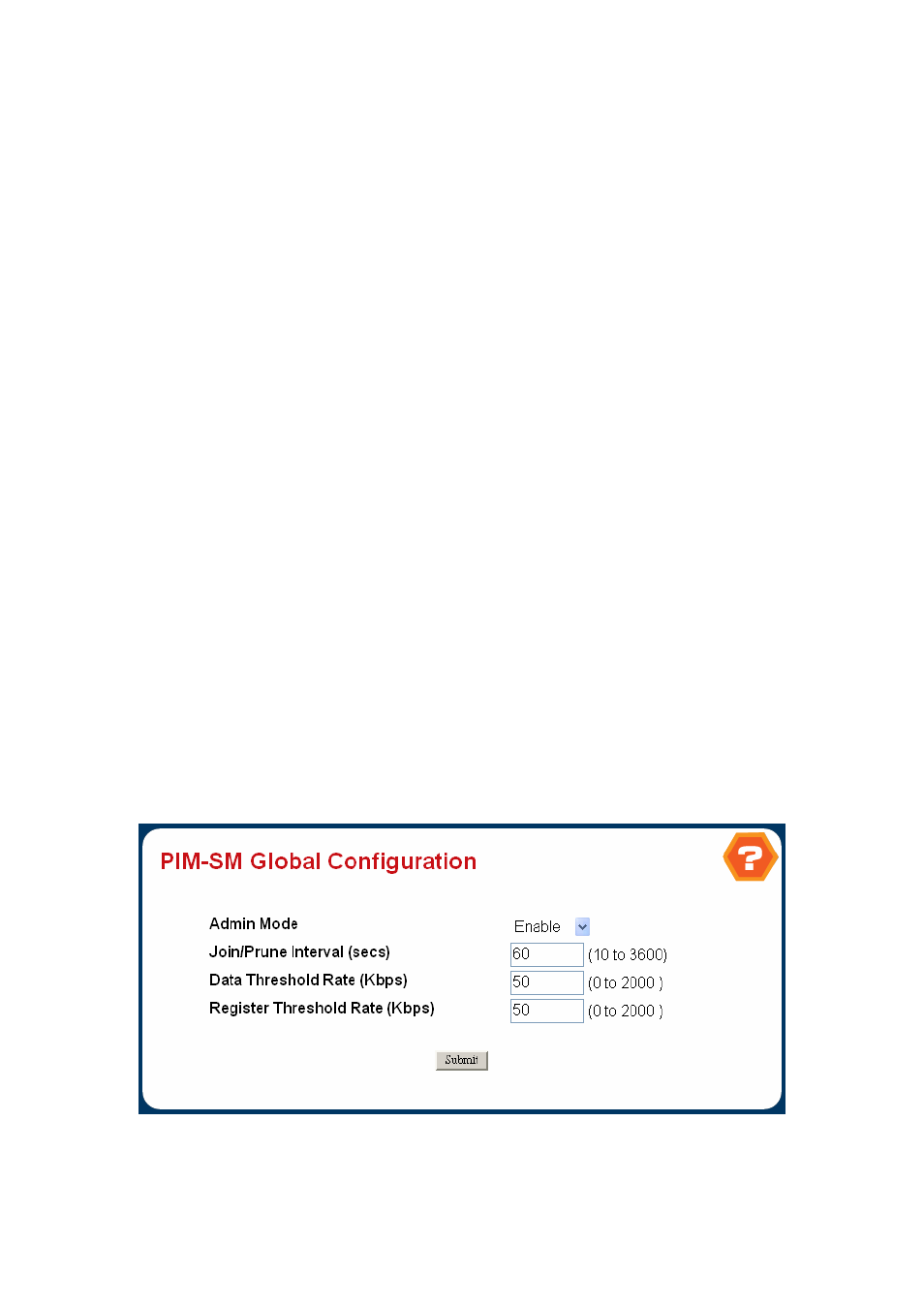6 pim-sm – PLANET WGS3-2820 User Manual
Page 303

User’s Manual of WGS3-2820/WGS3-5220
303
4.7.6 PIM-SM
Protocol Independent Multicast--Sparse Mode (PIM-SM)
A router receives explicit Join/Prune messages from those neighboring routers that have downstream group members. The
router then forwards data packets addressed to a multicast group, G, only onto those interfaces on which explicit joins have
been received. Note that all routers mentioned in this document are assumed to be PIM-SM capable, unless otherwise
specified.
A Designated Router (DR) sends periodic Join/Prune messages toward a group-specific Rendezvous Point (RP) for each group
for which it has active members. Each router along the path toward the RP builds a wildcard (any-source) state for the group
and sends Join/Prune messages on toward the RP. We use the term route entry to refer to the state maintained in a router to
represent the distribution tree. A route entry may include such fields as the source address, the group address, the incoming
interface from which packets are accepted, the list of outgoing interfaces to which packets are sent, timers, flag bits, etc. The
wildcard route entry's incoming interface points toward the RP; the outgoing interfaces point to the neighboring downstream
routers that have sent Join/Prune messages toward the RP. This state creates a shared, RP-centered, distribution tree that
reaches all group members. When a data source first sends to a group, its DR unicasts Register messages to the RP with the
source's data packets encapsulated within. If the data rate is high, the RP can send source-specific Join/Prune messages back
towards the source and the source's data packets will follow the resulting forwarding state and travel unencapsulated to the RP.
Whether they arrive encapsulated or natively, the RP forwards the source's decapsulated data packets down the RP-centered
distribution tree toward group members. If the data rate warrants it, routers with local receivers can join a source-specific,
shortest path, distribution tree, and prune this source's packets off of the shared RP-centered tree. For low data rate sources,
neither the RP, nor last-hop routers need join a source-specific shortest path tree and data packets can be delivered via the
shared, RP-tree. Protocol Independent Multicasting - Sparse Mode (PIM-SM) Protocol Help
4.7.6.1 PIM-SM Global Configuration
Figure 4-6-78
PIM-SM Global Configuration